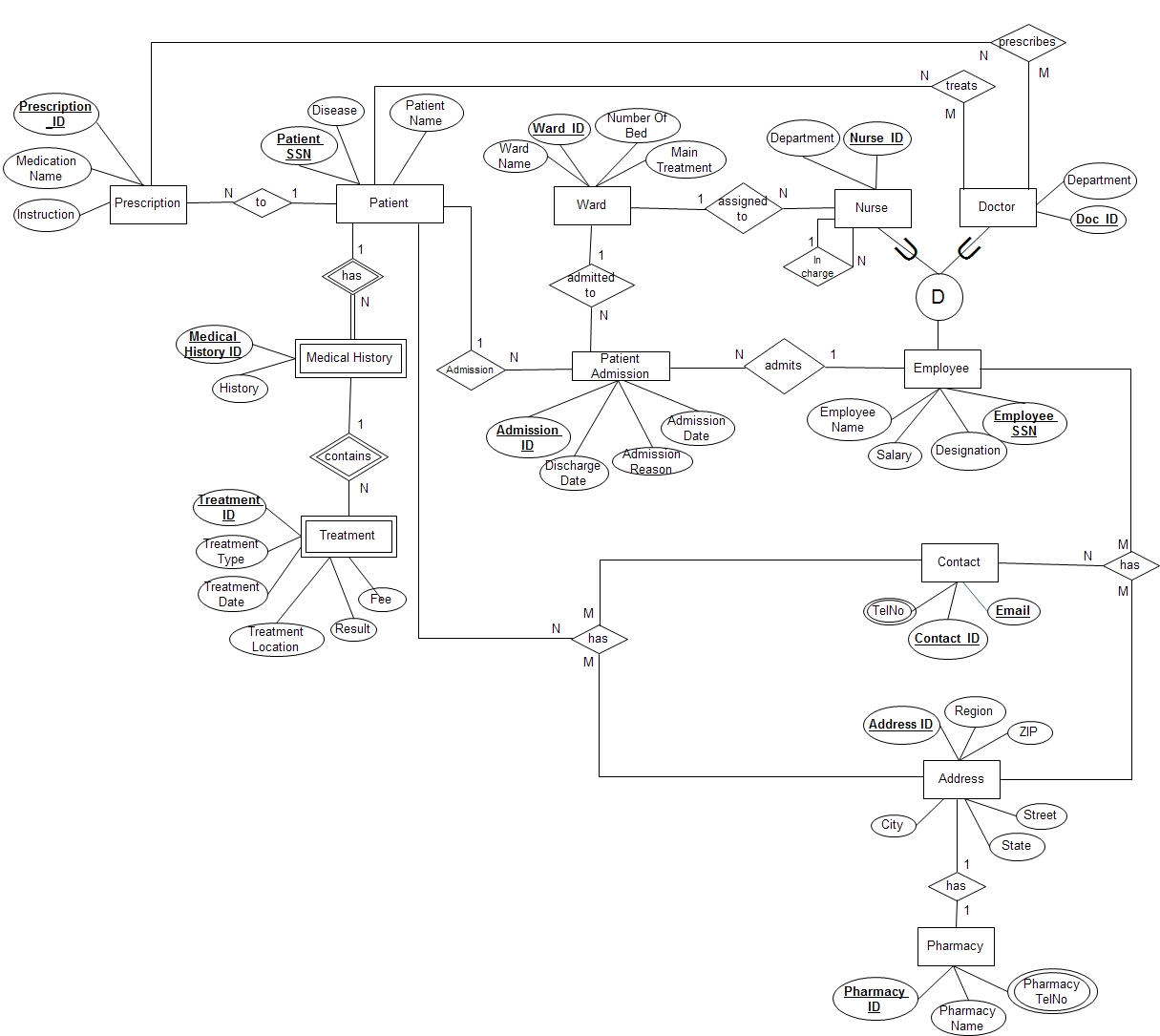Hi everyone,
Can someone please explain how to determine cardinality ratio for a relationship.
For example;
In a database for a hospital there is an entity Doctor and Patient. One or more doctors will treat a patient.
So, is the cardinality ratio between Doctor and Patient is M:1 (one or more doctors will treat a patient) or M:N, many Doctor treats many Patient since there will be many patients in the hospital.
Thank you.

